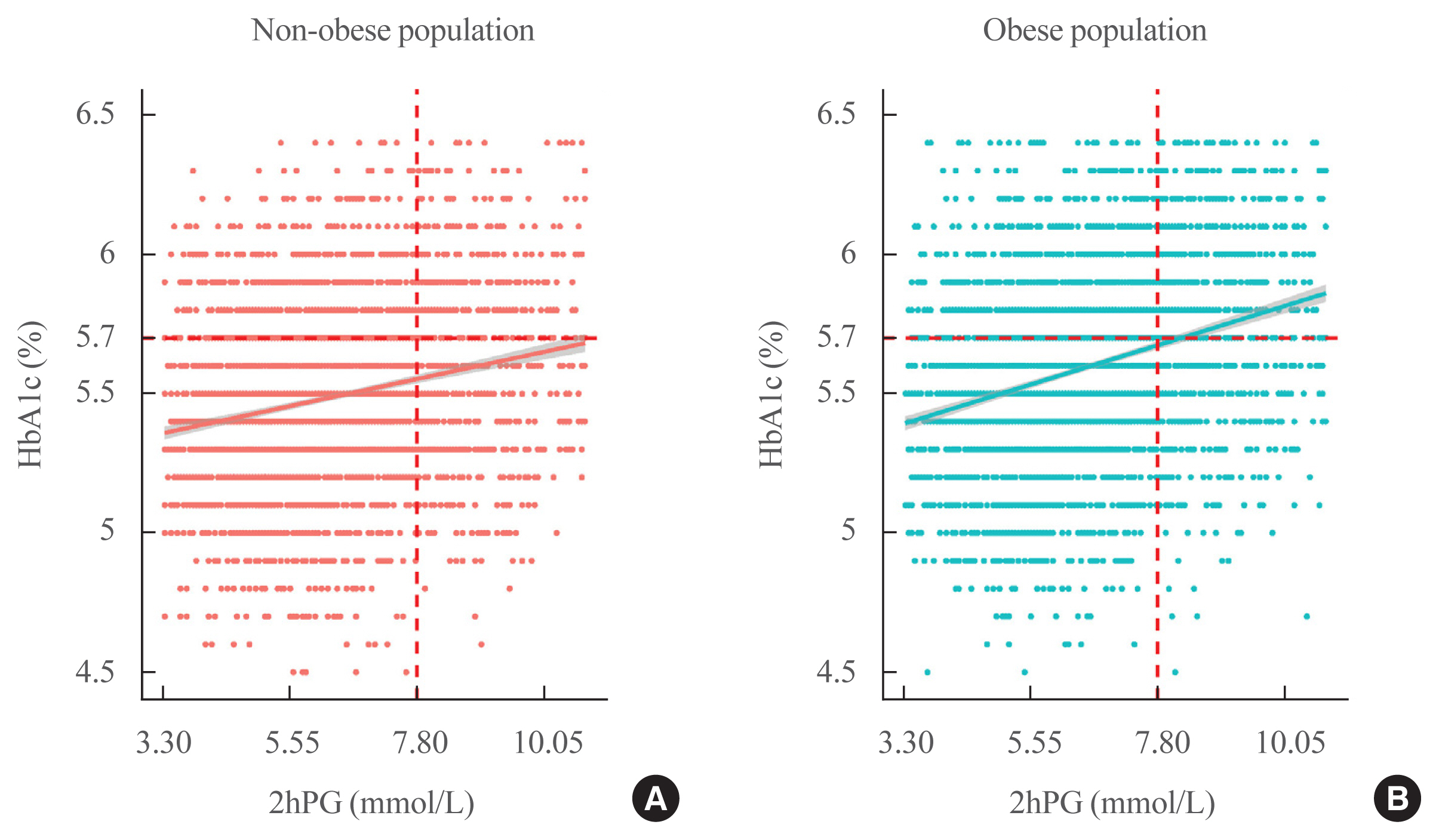Search
- Page Path
- HOME > Search
Original Article
- Clinical Study
- Predictive Performance of Glycated Hemoglobin for Incident Diabetes Compared with Glucose Tolerance Test According to Central Obesity
- Suji Yoo, Jaehoon Jung, Hosu Kim, Kyoung Young Kim, Soo Kyoung Kim, Jungwha Jung, Jong Ryeal Hahm, Jong Ha Baek
- Endocrinol Metab. 2020;35(4):873-881. Published online December 23, 2020
- DOI: https://doi.org/10.3803/EnM.2020.798

- 3,861 View
- 102 Download
-
 Abstract
Abstract
 PDF
PDF Supplementary Material
Supplementary Material PubReader
PubReader  ePub
ePub - Background
To examine whether glycated hemoglobin (HbA1c) test would be a suitable screening tool for detecting high-risk subjects for diabetes compared to oral glucose tolerance test (OGTT) according to accompanied central obesity.
Methods
In this prospective population-based cohort study, both OGTT and HbA1c tests were performed and continued every 2 years up to 12 years among individuals with non-diabetic state at baseline (aged 40 to 69 years, n=7,512). Incident diabetes was established by a doctor, HbA1c ≥6.5%, and/or fasting plasma glucose (FPG) ≥126 mg/dL, and/or 2-hour postprandial glucose (2hPG) level based on OGTT ≥200 mg/dL. Discriminative capacities of high HbA1c (≥5.7%) versus high 2hPG (≥140 mg/dL) for predicting incident diabetes were compared using Cox-proportional hazard regression and C-index.
Results
During the median 11.5 years of follow-up period, 1,341 (17.6%) developed diabetes corresponding to an incidence of 22.1 per 1,000 person-years. Isolated high 2hPG was associated with higher risk for incident diabetes (hazard ratio [HR], 4.29; 95% confidence interval [CI], 3.56 to 5.17) than isolated high HbA1c (HR, 2.79; 95% CI, 2.40 to 3.26; P<0.05). In addition, high 2hPG provided better discriminatory capacity than high HbA1c (C-index 0.79 vs. 0.75, P<0.05). Meanwhile, in subjects with central obesity, the HR (3.95 [95% CI, 3.01 to 5.18] vs. 2.82 [95% CI, 2.30 to 3.46]) and discriminatory capacity of incident diabetes (C-index 0.75 vs. 0.75) between two subgroups became comparable.
Conclusion
Even though the overall inferior predictive capacity of HbA1c test than OGTT, HbA1c test might plays a complementary role in identifying high risk for diabetes especially in subjects with central obesity with increased sensitivity.


 KES
KES
 First
First Prev
Prev



